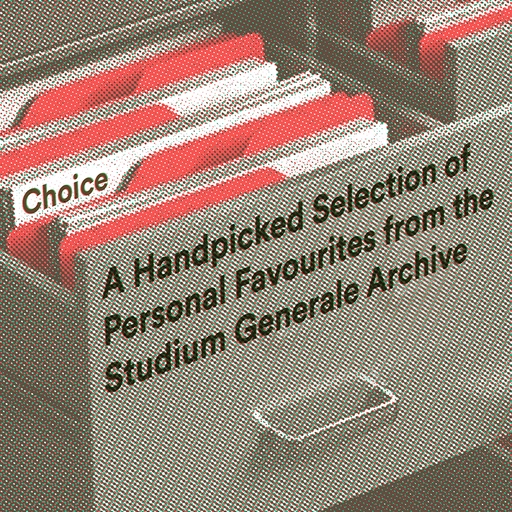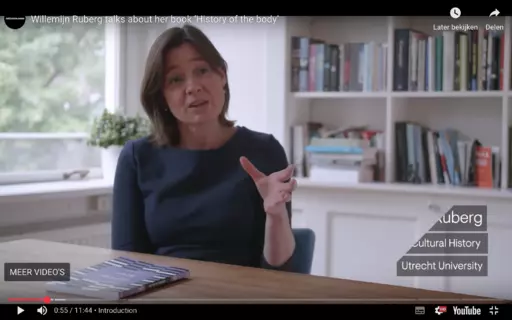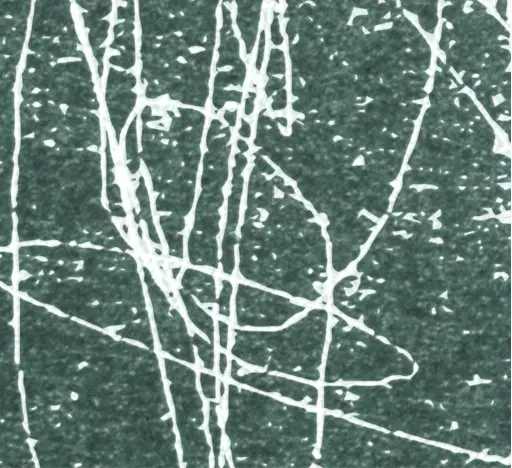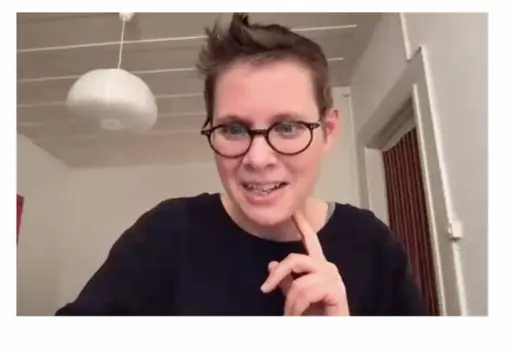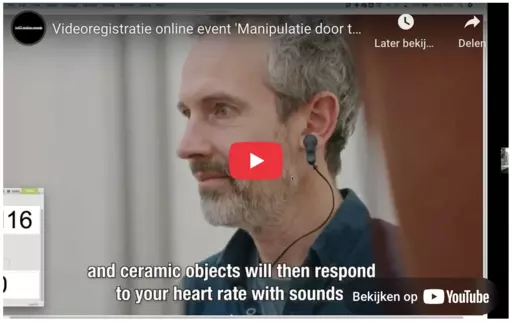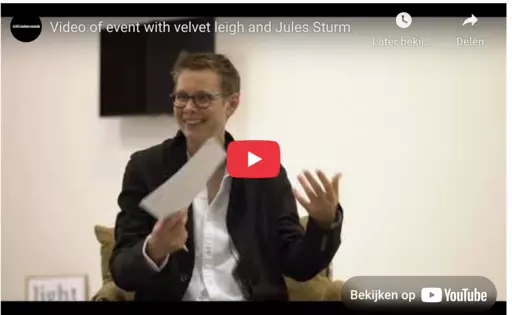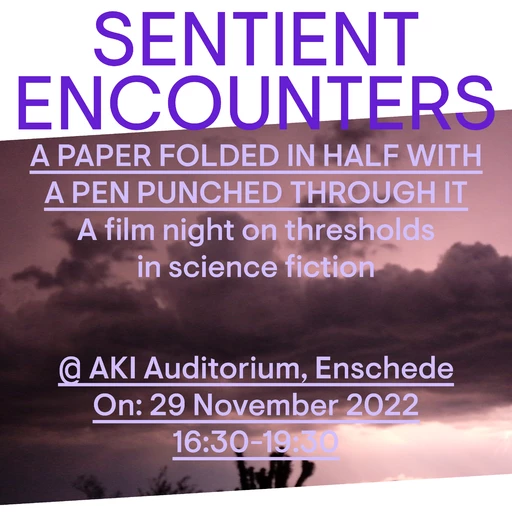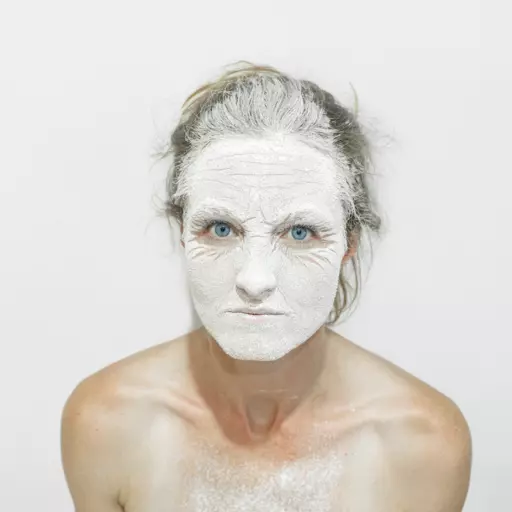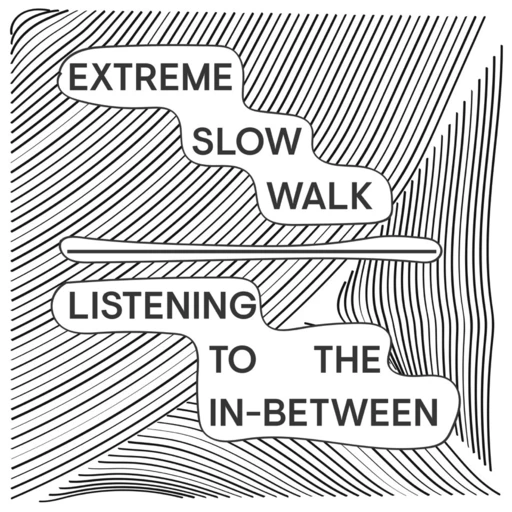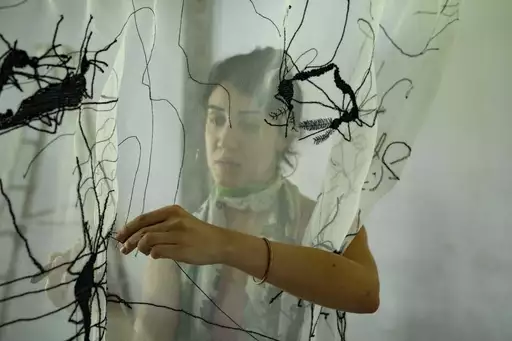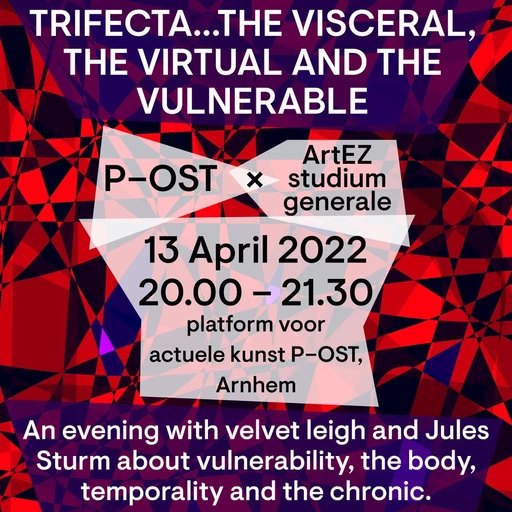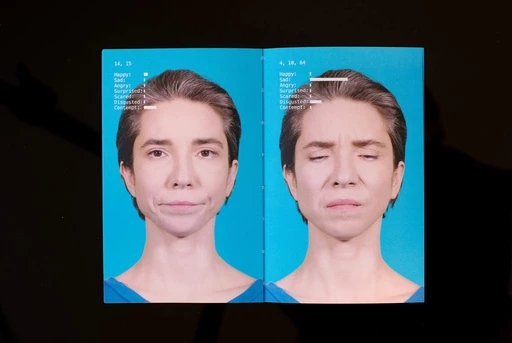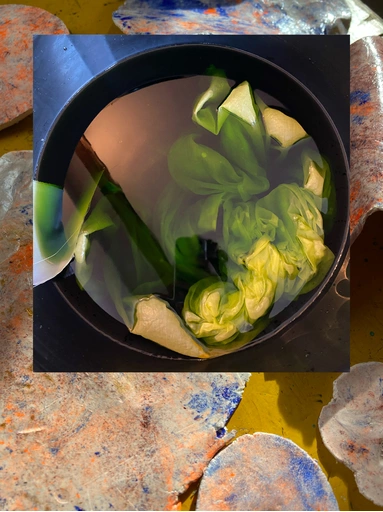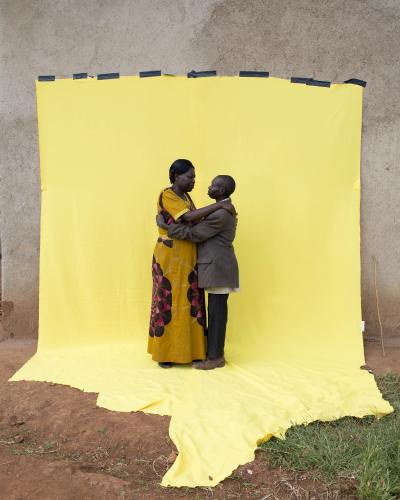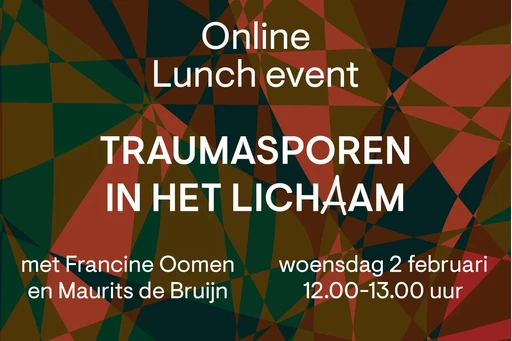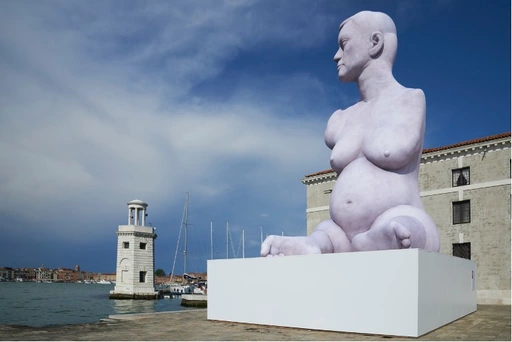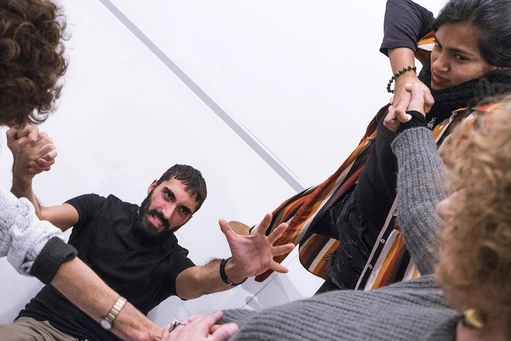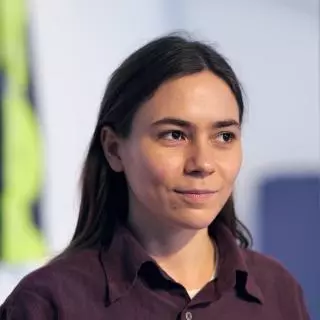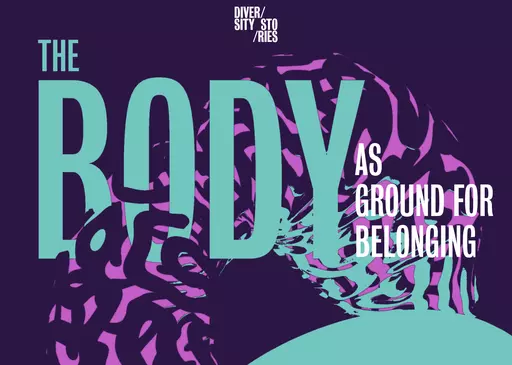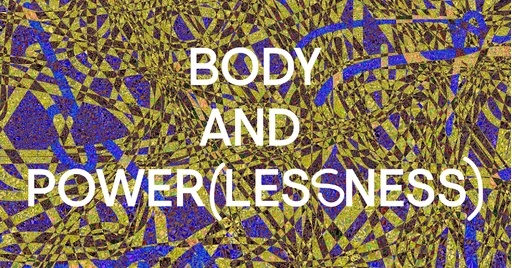
Body and power(lessness)
What happens when we find that we have far less control over our bodies than we thought we had, due to the external force exerted on our bodies by a disease, on our freedom of movement by the government and on our minds by technology. What does this powerlessness do to our body and to the way we look at it?
Programme and Publications
We explored all this and discussed with students, artists and academics how we physically experience autonomy, powerlessness, justice, care and collectives. In particular, we looked at ways of strengthening our body by taking very good care of it, by listening or by collaborating, and speaking as one collective body.
Online Exhibition: Body and Power(lessness)
View the online exhibition with work by ArtEZ students on Body and Power(lessness).Bodies and Breath: Embodied Research & Writing
What is the relationship between the body, research and writing? Why is it important to account for the body in research, writing and making?Online Course
Online lessenserie: The Body
Drie lessen over het lichaam
Na de online lessenserie over LAND, presenteren we een gloednieuwe online cursus over het lichaam, opgesteld door ArtEZ-docent Isis Freitas Vale Germano. Volg hem op je eigen moment en in je eigen tempo. Met filmpjes, teksten, theoretische en praktische opdrachten.
Essays, blogs & interviews
ArtEZ Studium Generale en Mister Motley publiceerden samen verhalen en essays geschreven door kunstenaars, schrijvers en artistiek onderzoekers. Als afsluiting organiseerden we ook een online interview waarvan je hieronder de registratievideo kunt bekijken.
Ik wil een constant orgasme in een prachtig lichaam
De krachtige kwetsbaarheid van trans*lichamen
In dit openingsessay bespreekt Dagmar Bosma hoe het fysieke en psychische lichaam samenhangen. Hen kijkt hoe ons beeld over het lichaam is gevormd door filosofen als Nietzsche en Spinoza en gaat in op de krachtige kwetsbaarheid van trans*lichamen in het werk van verschillende kunstenaars. Dagmar Bosma is een kunstenaar, schrijver en cultureel programmeur.
Lichaam - een gesprek met Dagmar Bosma
Begeleidende podcast bij het openingsessay van Dagmar Bosma. In deze aflevering gaat Lieneke Hulshof, hoofdredacteurvan Mister Motley, met Dagmar in gesprek. Dagmar Bosma is een kunstenaar, schrijver en cultureel programmeur.
Een lichaam dat niet wordt bewoond
Over trauma, therapie, overleven en oud-Griekse klaagzangen
Hoe kijken wij in de huidige samenleving naar ons lichaam? Waar ligt haar kracht en waar is zij kwetsbaar? Hoe machtig of onmachtig is zij? In de serie Lichaam en (on)Macht duiken Mister Motley en ArtEZ Studium Generale dieper in dit onderwerp. In 2020 kwam het boek Ook mijn Holocaust uit van auteur Maurits de Bruijn. In dit essay schrijft hij over intergenerationeel trauma. Maurits de Bruijn is een Nederlandse schrijver en journalist.
Traumasporen in het lichaam
Videoregistratie online event 2 februari 2022
Online gesprek met schrijvers Francine Oomen en Maurits de Bruijn over intergenerationeel trauma. In dit gesprek stond de lichamelijke overerving van trauma centraal en hoe deze beide schrijvers daar invulling aan geven in hun werk.
Psychologen en psychiaters besteden over het algemeen weinig tot geen aandacht aan het lichaam. Terwijl trauma zich ook in het lichaam manifesteert en het ons lichaam is dat reageert. Francine Oomen is Nederlandse schrijver, ontwerper en illustrator. Maurits de Bruijn is een Nederlandse schrijver en journalist.
Vulnerable Looking
Jules Sturm writes in this essay about the vulnerable body in art. She tries to find answers to the question of how art, disability and vulnerability can relate to each other in a constructive way. How can 'disability' change not only the way we feel, but also the way we look at others, at ourselves and at the art we make? What can 'vulnerability' mean for the artist as a tool? Jules Sturm is a senior researcher and lecturer in art education at Zurich University of the Arts.
Ieder een lichaam
Over verzet, verlangen en vrijheid
Hoe kijken wij in de huidige samenleving naar ons lichaam? Waar ligt haar kracht en waar is zij kwetsbaar? Hoe machtig of onmachtig is zij? In de serie Lichaam en (on)Macht duiken ArtEZ Studium Generale en Mister Motley dieper in dit onderwerp. Olivia Laing is een Britse non-fictie en romanschrijver.
"Art is a training ground for empathy" - in conversation with Olivia Laing
How do we view our bodies in today's society? What is her strength and what makes her vulnerable? How mighty or impotent is she? In the series Body and Power(lessness), ArtEZ Studium Generale and Mister Motley delve deeper into this subject. In this interview, Joke Alkema (head of ArtEZ studium generale) and Lieneke Hulshof (editor-in-chief of Mister Motley) talk to the British author Olivia Laing. Olivia Laing is a British non-fiction writer and novelist.
De mensheid als termietenhoop – In gesprek met Hotel Modern
Hoe kijken wij in de huidige samenleving naar ons lichaam? Waar ligt haar kracht en waar is zij kwetsbaar? Hoe machtig of onmachtig is zij? In de serie Lichaam en (on)Macht duiken ArtEZ Studium Generale en Mister Motley dieper in dit onderwerp. Hotel Modern versmelt muziek, performance, poppenspel en film in beeldende voorstellingen, en is opgericht door actrices Pauline Kalker en Arlène Hoornweg en beeldend kunstenaar Herman Helle.
Wie bezit een online lichaam?
De ethische kant van het afbeelden van politieke doden
In het voorjaar van 2020 kwam de Amerikaanse vlogger Jake Paul in opspraak nadat hij een video had gedeeld waarin een winkelcentrum werd geplunderd. De plundering – een van vele in de Verenigde Staten van de afgelopen tijd – was een reactie op de dood van George Floyd, een Afrikaans-Amerikaanse man die op 25 mei was vermoord door een politieagent. De drieëntwintigjarige Paul kwam onder vuur te liggen omdat zijn opname van de plundering hem medeplichtig deed lijken. Nadia de Vries is een dichter, schrijver en een cultuurwetenschapper.
In hoeverre moeten we problemen laten zien om ze invoelbaar te maken? – In gesprek met Rabiaâ Benlahbib
Rabiaâ Benlahbib is oprichter en directeur van Creative Court. In de stad van het internationale recht, Den Haag, ontwikkelt deze organisatie kunstprojecten waarin wordt gereflecteerd op dat internationale recht en op sociale gerechtigheid. Ook doceert zij aan de MA Photography & Society van de Koninklijke Academie van Beeldende Kunsten (KABK) in Den Haag.
Power, the body and a mosquito swarm
How I ended up making art about the most hated insect in the world.
This blog is part of our project The Body and Power(lessness), on how we physically experience autonomy, power(lessness), (in)justice, care and collectivity. Vivian Caccuri is an artist and museologist based in Rio de Janeiro, Brazil.
Tussen mens en mug
gedachten bij het werk van Vivian Caccuri
Gedachten bij het werk van Vivian Caccuri, een essay van Joep Christenhusz. Joep Christenhusz is journalist en verbonden aan het lectoraat Theorie in de kunsten, waar hij tevens onderzoek doet naar ecologisch geëngageerde muziek en klankkunst.
De ontzettende onvoorspelbaarheid van het hart – in gesprek met Coralie Vogelaar
Via Google Meet (hoe kan het ook anders?) sprak ik met Coralie over de eerste keer dat ze zich op het internet begaf, de emotieherkenningsoftware die haar als een emoticon deed bewegen en haar Prix de Rome-installatie die mensen in contact bracht met de grillen van hun eigen hartslag. “Technologie kan de illusie wekken dat de wereld heel begrijpelijk is.” Coralie Vogelaar is een Nederlandse kunstenaar en ontwerper.
‘Erotiek is een levenskracht en seksualiteit is daar soms onderdeel van’ - in gesprek met curator Ine Gevers
Ine Gevers cureerde samen met Morgan Catalina COME ALIVE, een tentoonstelling waarin de waarde van erotiek werd uitgediept. Het ging niet over sexy lijven, harde seks of orgasmes, maar over hoe we erotiek kunnen zien als een kracht om samen te komen en problemen in de wereld aan te gaan. Daarbij werd de vraag gesteld welke lichamen in onze maatschappij zich seksueel mogen uiten en welke niet. Ine Gevers is een Nederlandse tentoonstellingsmaker, schrijver en activist. Lieneke Hulshof is een kunstjournalist, curator en docent aan de opleiding kunsteducatie ArtEZ Arnhem.
A conversation with Mijke van der Drift and Agnieszka Anna Wołodźko
About Affect as Contamination
For this podcast, we invited philosopher, researcher and labour organizer Mijke van der Drift to engage with Agnieszka Anna Wołodźko, lecturer and researcher teaching contemporary philosophy and art-science at AKI Academy of Art and Design ArtEZ. Agnieszka Anna Wołodźko is lecturer and researcher in contemporary philosophy and art-science at AKI ArtEZ Enschede. Mijke van der Drift works in various collaborations and collectives on transfeminism and cultural theory, and has writing and arts practice in media and performance.
De keuze van Mirjam Zegers
Favorieten uit het Studium Generale-archief over relaties tussen muziek en het lichaam
In de rubriek De keuze van vragen we kunstenaars, docenten, onderzoekers, studenten en alumni om vanuit hun eigen expertise een duik in ons archief te nemen om er vervolgens uit te komen met een persoonlijke selectie favorieten. Deze keer vroegen we Mirjam Zegers. Zij koos als onderwerp het verband tussen een vluchtige kunstvorm als muziek en het lichamelijke. 'Ik heb een serie samengesteld speciaal voor musici, binnen en buiten ArtEZ, die willen nadenken over relaties tussen muziek en het lichaam.'
Video interviews with artists, thinkers and makers
In deze serie filminterviews, als onderdeel van de Body and Power(lessness), gaat gastcurator Irene Constandse voor ons in gesprek met verschillende kunstenaars, denkers en makers. Camera: Kees Veling.
'The body knows much more than we think it does.'
Interview with artist Narges Mohammadi
'It is no longer necessary to follow the meanings that the disembodied fashion system tries to force on us.'
Chet Bugter talks about his embodied research. How you can use your body as a research tool in fashion.
“The body is an excellent tool for communication”
Choreographer Annemijn Rijk talks about her project ‘Body of Art’
“The body has increasingly become a project you can work on”
Dr. Willemijn Ruberg talks about her book ‘History of the body’
InstaPoetry by Tessa van Rooijen
Tessa van Rooijen schreef speciaal voor onze serie Lichaam en (on)macht het Insta-gedicht 'sporen'. Vormgeving is van Corine van der Wal.
sporen
gedicht Tessa van Rooijen (ArtEZ Alumna Creative Writing)
Een lichaam is
gedicht Tessa van Rooijen (ArtEZ Alumna Creative Writing)
Een lichaam om de realiteit uit te knijpen
gedicht Tessa van Rooijen (ArtEZ Alumna Creative Writing)
Work by students
ArtEZ student Creative Writing Myrthe Oomen, publiceerde haar afstudeerwerk in een essay en podcast. Rinke Fierinck, student docent beeldende kunst en vormgeving aan ArtEZ, en Mirella Koopman, student docent beeldende kunst en vormgeving aan ArtEZ, spraken beiden tijdens hun stage bij ArtEZ Studium Generale met afstudeerders vanuit het thema Lichaam en (on)Macht.
Mijn lichaam en de elektriciteitsmast
Myrthe Oomen, student ArtEZ Creative Writing, schreef het essay 'Mijn lichaam en de elektriciteitsmast'. Het essay leest als een collage van fragmenten over de (on)mogelijkheid om je onderdeel te voelen van een landschap. De taal van schrijvers als Annie Ernaux, George Perec en C.O. Jellema helpen haar kwijtgeraakte woorden terug te vinden.
Podcast: 'Mijn lichaam en de elektriciteitsmast' van Myrthe Oomen
Het essay 'Mijn lichaam en de elektriciteitsmast' is via deze podcast te beluisteren. De podcast is gemaakt door Dennis Gaens, docent ArtEZ creative writing.
“Ik hoop dat ik ooit gewoon naar mezelf kan kijken en niet denk: ik zie een vreemdeling.”
Interview Ilse van der Velden, ArtEZ student Creative Writing
Het liminalien perspectief van Ida Leijting
"Wat als we de wereld zien als een ultieme bron van kennis, vol kennislichamen"
In gesprek met ArtEZ-alumna Katrijn Westland
"Mijn lijf is niet alleen een lichaam dat ik draag maar ook een icoon dat mensen kunnen aflezen."
Interview met Lotte Manders (ArtEZ alumna Bear Fine Art)
'Het naakte lichaam is ook gewoon mooi'
Interview met Zoë Rullens, ArtEZ alumni Graphic Design
De wolken huilen
Interview met Geert Pfeiffer, ArtEZ Conservatorium Zwolle
Video registration online event
Bekijk hier verschillende videoregistraties van online events waarin verschillende aspecten van Body and Power(lessness) worden besproken. Over kwetsbaarheid, kracht, de macht van technologie over ons lichaam, trauma en meer.
Online Reading Group Body and Power(lessness) with Jules Sturm
Manipulatie door technologie - Maxim Februari en Coralie Vogelaar
Trifecta ... the visceral, the virtual and the vulnerable
Video of event with velvet leigh and Jules Sturm
Het naakte lichaam, erotiek en seks in kunst
Videoregistratie online event 12 oktober 2022
agenda
A Paper folded in half with a pen punched through it
Sentient Encounters film night
29 nov. 2022AKI Enschede, auditorium 16:30 - 19:30
Op bezoek bij Nieke Koek
Samen naar haar tentoonstelling in De Fundatie in Zwolle
25 okt. 2022 → 21 nov. 2022De Fundatie, Zwolle
Extreme Slow Walk - Listening to the In-Between
05 okt. 2022Sophia Building and Conservatory Zwolle
Vivian Caccuri - De herkomst, politieke context en het sexleven van de mug
30 mei 2022Stadkamer Zwolle 16.00-18.00 uur
Trifecta ... the visceral, the virtual and the vulnerable
P–OST x ArtEZ Studium Generale
13 apr. 2022Platform voor Actuele Kunst P–OST, Driekoningenstraat 16 Arnhem 20:00 - 21:30
Manipulatie door technologie
een online lunchevent over het lichaam en diens bewegingsvrijheid met Maxim Februari en Coralie Vogelaar
23 mrt. 2022online Zoom event via: https://us02web.zoom.us/j/87348718958 12.00 - 13.00 uur
Muddy Fields and Pink Possums: field work and color work as an entry point for embodied writing
Workshop by Helena Sanders
22 mrt. 2022AKI Enschede from 16:30 to 19:30 - there will be some snacks/food provided
Rabiaâ Benlahbib: De macht van de maker – ethische dilemma’s in de kunstpraktijk
Kitchen Table Conversation
07 mrt. 2022Sophiagebouw Zwolle 16.30-19.30 uur - er wordt gezorgd voor wat snacks/eten
Online Lunch event: Traumasporen in het lichaam
ArtEZ studium generale x Mister Motley
02 feb. 2022https://us02web.zoom.us/j/83576153124?pwd=VlRhZUIyeEJwNlhwKy9LMklIY3FPZz09 12.00 - 13.00 uur
Leesgroep Het Lichaam en (on)macht - met Jules Sturm (online)
Aflevering 2
01 dec. 2021online event 19.00 - 21.00 uur
Kitchen Table Conversations - Het Lichaam en (on)Macht
23 nov. 2021Sophiagebouw, Zwolle 14.00 - 22.00 uur
Leesgroep Het Lichaam en (on)macht - met Dagmar Bosma
Aflevering 1
14 okt. 2021ArtEZ Arnhem 19.00 - 21.00 uur
The Body as Ground of Belonging
25 feb. 2019Theaterzaal, Zwolle 19:00 – 21:00 hrs


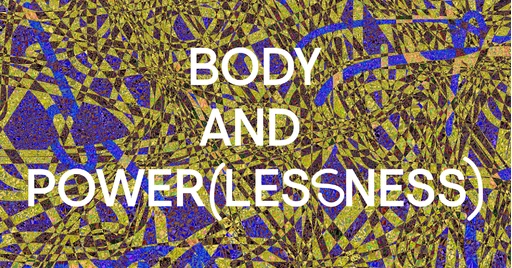



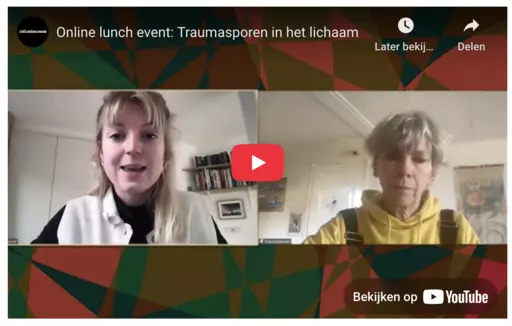





![[i]What does your moment of forgiveness look like?[/i] - Rwanda 20 Years: Anatomy of Forgiveness - Creative Court, photo Lana Mesić](/files/t/things.1704.creativecourt1.webp)





